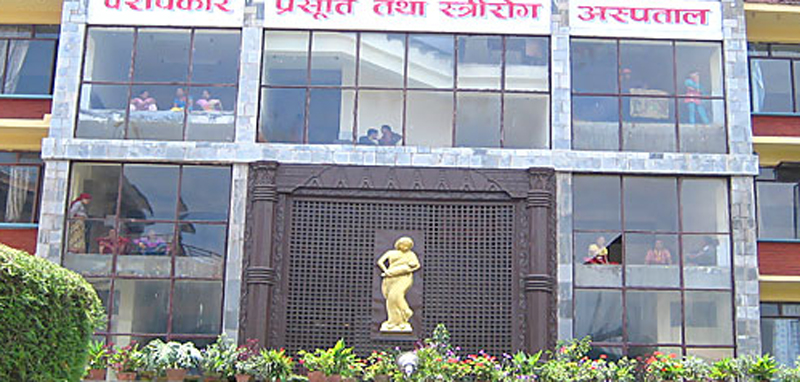Four years on, IVF service yet to resume at Prasuti Griha
Kathmandu, January 13
It has been more than four years since the state-owned Paropakar Maternity and Women’s Hospital (Prasuti Griha) stopped in-vitro fertilisation (IVF) service citing the damage done to the hospital building in the devastating earthquakes of 2015.
The hospital has already started giving all other services from a wellequipped new building, but it has not resumed IVF services yet.
“Though we have started giving other services from a new building from 12 July 2019, we are not able to provide IVF service mainly due to space crunch,” said Dr Jageshwor Gautam, director at Paropakar Maternity and Women’s Hospital.
“The doctor, who had been providing IVF service, went to India for further studies, and after completing his studies there, he resigned from the post. It took time for us to fill the vacant post. Though we have trained manpower to provide the service now, the doctor is currently on maternity leave. Also, we are waiting for the completion of the hospital building in Kupondole, from where we will provide IVF service,” said Dr Gautam.
According to the hospital, at least 30 couples are in the waiting list to avail IVF service.
As the hospital has halted the service for so many years, the needy patients are forced to visit private hospitals and health centres and pay hefty amounts. Many of them go to India every month to avail the IVF service. The hospital used to charge somewhere around Rs 100,000 to Rs 160,000 for the service. “Now, the person availing the service may have to pay around Rs 200,000. Private IVF centres are charging Rs 300,000 on an average,” said Dr Gautam.
“We are working on the plan to resume IVF service from a new building in Kupondole. We will resume the service within a couple of months,” said Dr Gautam. Around 15 per cent of married people in the country are not able to conceive babies, and one per cent of them can conceive babies through IVF, Dr Gautam said.
“IVF involves fertilising an egg outside the body, and then implanting it in a woman’s uterus. It is helpful for women whose fallopian tubes are blocked,” added Gautam.






